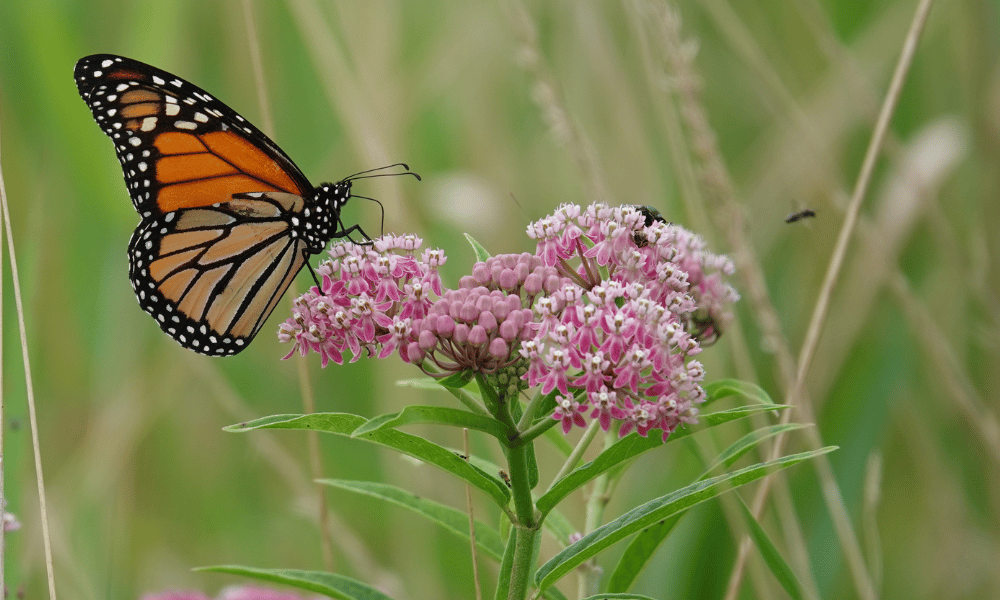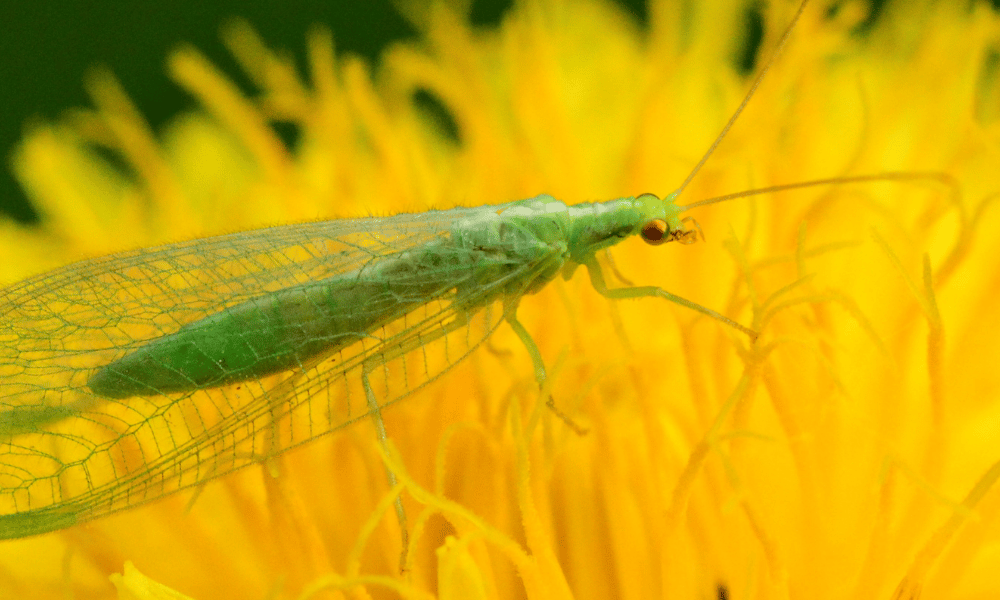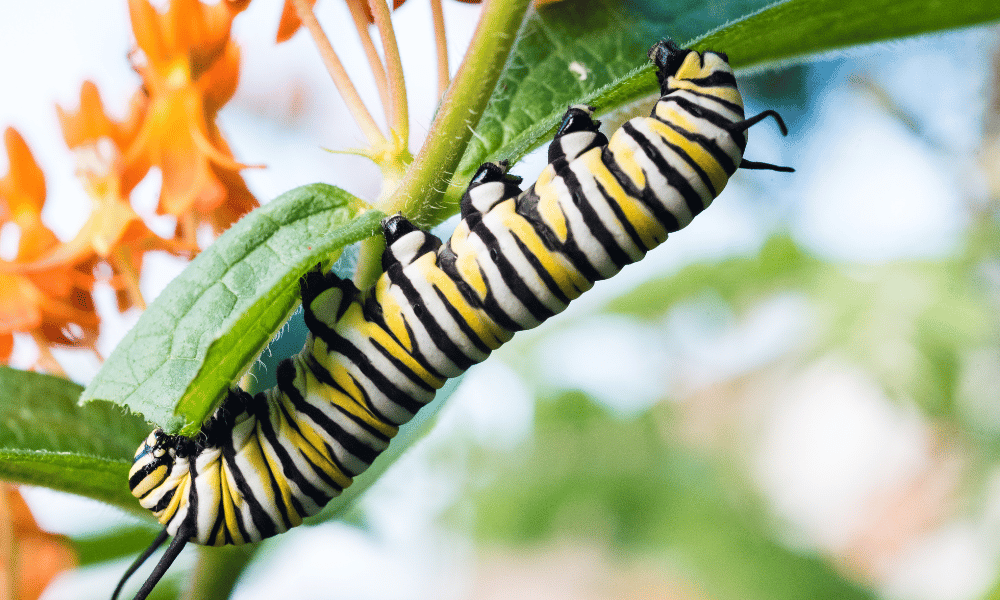We know that larvae lacewings are incredible at pest control. These tiny insects gorge on many types of pests as larvae before becoming adults. While aphids seem to be their primary choice, are lacewings contributing to the population collapse of monarchs? Do lacewings eat monarch caterpillars?
Lacewings are known to eat caterpillars and other soft-bodied insects. However, it is not common for lacewing larvae to eat a monarch caterpillar. While caterpillars are on the food chain for lacewing larvae, there are usually more than enough aphids to eat, instead.
If you notice eggs on milkweed plants and want to help the monarch butterfly population, try putting a fine mesh around the milkweed plants to protect them from lacewings and other predators.
Monarch caterpillars are especially important and need to be protected.
Planting milkweed is the best and only way to increase the monarch population in your garden. This is because monarch caterpillars will only eat milkweed plants. Be sure to grow the type of milkweed native to your area for the best results.

What Else Eats Monarch Caterpillars?
In addition to lacewing larvae, monarch’s have a variety of natural enemies. With the population on the decline as quickly as it is, it is important to help protect the caterpillars and eggs of the species.
Growing milkweed is the best way to help the monarch butterfly population. Grow these in pots to easily move inside after you spot eggs. You can also grow it directly in the ground outdoors, but be on the lookout for predators.
You can cover the milkweed with bug netting after you notice some eggs on the leaves. This will help prevent predators from entering the netting and eating the eggs.
Fire ants and spiders have been known to feast on monarch eggs if left unattended and unprotected. As the eggs hatch and caterpillars emerge, many more predators arise.
Wasps and birds attack and eat adult monarch butterflies and younger caterpillars.
Protecting monarchs from predators is essential to their preservation. However, there are many other causes of population decline than just wasps or fire ants.
A major cause of the population decline is environmental destruction. Due to climate change and advancing weather patterns, the migration pattern and nesting areas are being threatened.
What Else Do Lacewings Eat?
Lacewings are magnificent and incredibly beneficial creatures. Lacewings are known as the “aphid lions” thanks to the insane amount of aphids these small larvae insects can consume in their short lifecycle.
Even though they are mainly known for their aphid-rich diet, lacewings also eat a variety of other pests during their larval stage.
Mites, whiteflies, mealybugs, leafhoppers, and thrips are all commonly found in the diet of larvae lacewings.
It is so no secret that lacewings are one of the best natural options for pest control in your garden. You can purchase lacewing eggs from online stores and release them into your garden at the beginning of the season.
As they grow into adults, lacewings will drastically change their diet. Adult lacewings feed almost entirely on nectar and pollen from flowers. It is lacewing larvae that are the pest eradicators.
As they gather food for themselves, they help the flower or plant complete pollination, which is essential for many flowers to grow into vegetables and fruits.

While bees and butterflies may be considered major pollinators, it is not fair to forget adult lacewings’ work.
Lacewings cannot bite or sting, making them relatively peaceful garden companions. All in all, lacewings are a wonderful addition to your garden space and will help protect and pollinate your plants throughout their lifecycle.
No, adult lacewings have a diet entirely consisting of plant material such as pollen and nectar. Although lacewings are purported to be beneficial for pest control, it is actually lacewing larvae that does all the hard work.
Summary
Lacewings are incredibly beneficial insects. In the larval stages, these creatures will keep your garden pest free. They consume many aphids and other soft-bodied pests that hang out trying to eat the leaves and stems of your garden plants.
Even though these larval lacewings can eat monarch caterpillars, they are so full of other insects that are easier to catch than monarch caterpillars. That said, it is still important to protect your caterpillars and eggs from predators.
Planting lots of native milkweed in your garden will help increase the number of monarchs you can see and keep in your space this season.







